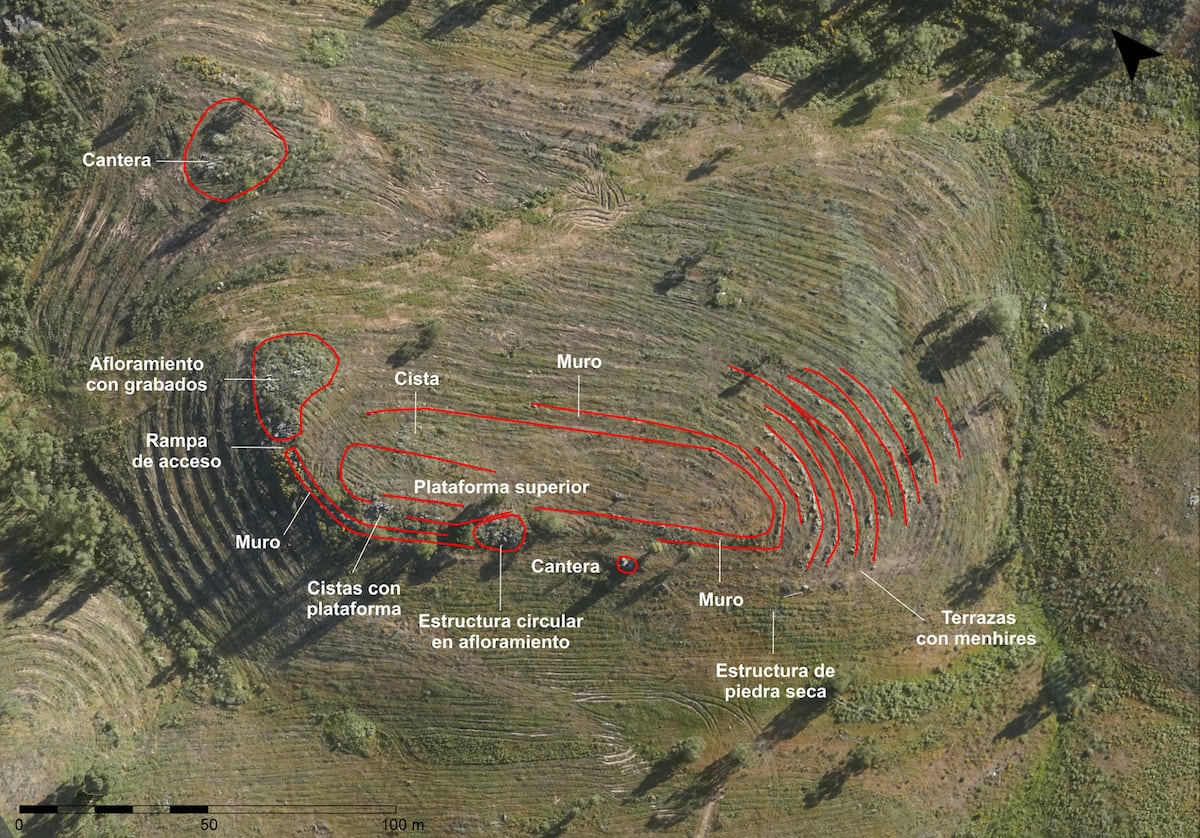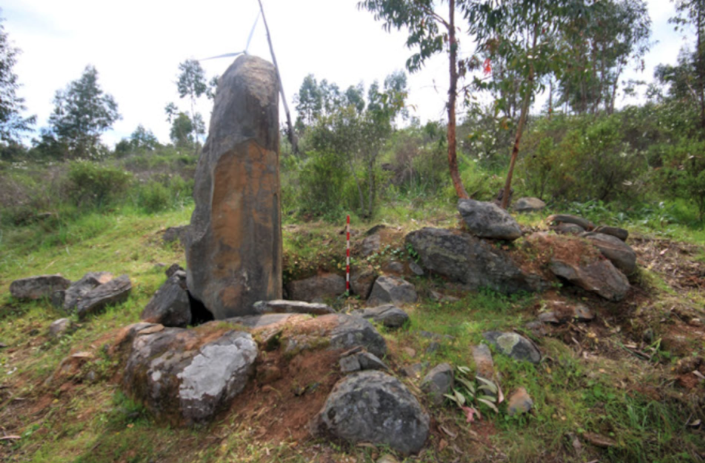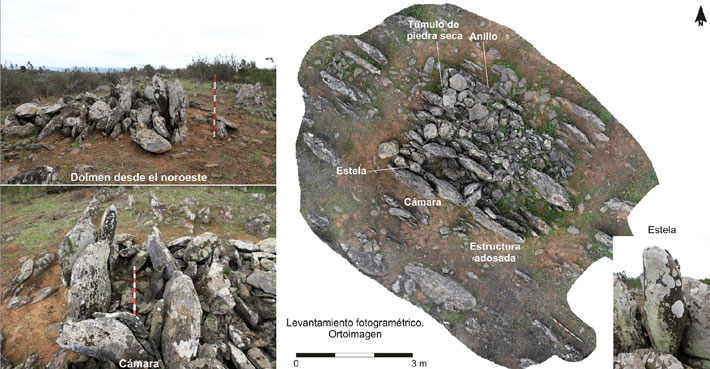Over 500 ancient stone monuments dot the rolling hills of southwestern Spain. La Torre-La Janera stretches across 220 acres in Huelva province. Prehistoric humans built this sacred landscape starting around 5000 BC. The site contains standing stones, burial chambers, and stone circles all in one location. Built 2,000 years before Stonehenge, this megalithic site represents one of Europe’s largest and most varied prehistoric stone complexes.
The monuments follow organized patterns across the landscape. 26 straight lines and two circular spaces organize the layout. Many stones sit on hilltops facing east to capture the sunrise during seasonal changes. The monuments range from modest 3-foot markers to towering 11-foot giants carved from local sandstone.

“No such compact concentration of ancient stone sites is known anywhere in Europe,” says Primitiva Bueno Ramírez from the University of Alcalá, one of the archaeologists studying the site.
A Stone Age Wonder
La Torre-La Janera stands apart from other ancient megalithic sites because of its variety. Most prehistoric sites contain one type of monument. However, this Spanish site includes standing stones, stone circles, burial chambers, and ritual spaces all in one location. The site stayed active for 3,000 years as successive generations added new monuments and modified existing ones.
Many stones bear geometric patterns, circular markings, and symbols that connect the site to ancient stone art traditions across Atlantic Europe. Nearby ancient quarries contain abandoned hammer stones and half-finished blocks. These remains show the organized stone cutting and transport work behind the construction.
The site reveals prehistoric societies that understood astronomy, organized large construction projects, and maintained sacred places across thousands of years. Originally, when built around 5000 BC, sea levels were 7 feet higher. The site sat closer to the Atlantic coast near the Guadiana River mouth, making it accessible for ancient coastal peoples.
“Finding stone circles and burial chambers on one site is not very common,” explains Bueno Ramírez to reporters. “Here everything appears together, and that is notable.”
Among Europe’s Greatest Megalithic Sites
La Torre-La Janera ranks alongside famous ancient stone sites like Carnac in France and Scotland’s Ring of Brodgar. Carnac contains 3,000 standing stones. Its variety sets it apart since most prehistoric sites specialize in one monument type. This Spanish site combines multiple stone monument traditions in a single location.
The scale of construction shows prehistoric organization across thousands of years. The monuments span continuous use from the earliest stones dating to 5000 BC through 3,000 years of additions. La Torre-La Janera became a sacred landscape maintained across 150 generations rather than just a single monument.

International recognition has confirmed the site as “the biggest and most diverse collection of standing stones grouped together in the Iberian Peninsula,” according to archaeologist José Antonio Linares from the University of Huelva. The site offers a new understanding of how Stone Age peoples organized societies, marked territories, and connected with seasonal star patterns.
Read More: Ancient Cave Discovery Challenges Long-Held Beliefs About Australia’s First Inhabitants
An Accidental Discovery
This ancient stone wonder might have remained hidden beneath a modern avocado farm. In 2018, a farmer wanted to plant crops on 1,500 acres. He faced a routine requirement for an archaeological survey before development could begin.
Archaeologists José Antonio Linares and Primitiva Bueno Ramírez arrived with laser scanning and aerial photography equipment. They expected to find scattered artifacts since residents had passed down stories of standing stones across the landscape. Previous surveys had identified a few ancient monuments in the area.

Scanning found unusual patterns across the hillsides. Then methodical searching followed. One standing stone became 10. 10 became 50. 50 became hundreds. By the survey’s end, they had recorded 526 ancient standing stones. They transformed planned farmland into one of Europe’s most important prehistoric megalithic sites.
Scientific Documentation and Global Recognition
Through 2021 and 2022, Linares and his international team mapped and analyzed every stone. They used computer modeling, detailed photography, and soil studies. Their research resulted in publication in Trabajos de Prehistoria, Spain’s leading archaeological journal. The peer-reviewed paper provided the first complete scientific analysis of the site.
Archaeological publications across Europe featured the find and drew comparisons with other famous ancient stone sites. Meanwhile, the findings confirmed La Torre-La Janera’s status as a site of international importance. The research offers new understanding of prehistoric European societies and their knowledge of astronomy and architecture.
Ongoing Research and Future Access
This archaeological find transformed the land from planned farmland into an international preserve. The southern Spanish government quickly established protected areas. The farmer who wanted to plant avocados became caretaker of a 7,000-year-old sacred landscape.
Research continues under the MENHIGUA project, a 6-year investigation funded by the regional government and European Union running through 2026. Each season brings new findings as excavations uncover buried monuments and analyze their relationship to the surrounding landscape.
Plans are underway to open parts of the site to visitors by late 2025. Designated viewing areas will allow public observation of ongoing archaeological work while protecting the monuments from damage.
A Megalithic Site Legacy
La Torre-La Janera stands as proof of the advanced societies that flourished in prehistoric southwestern Spain. These Stone Age peoples possessed extensive knowledge of astronomy, architecture, and social organization. This expertise enabled them to create monuments that have survived through changing climates, rising and falling civilizations, and thousands of years of landscape changes.
The megalithic site’s accidental finding reminds us that countless archaeological treasures likely remain hidden beneath modern developments. Somewhere, they wait for the right combination of legal protection, technology, and scientific curiosity to bring them to light.
Today, these ancient stones continue their silent watch over the southern Spanish countryside. They connect modern visitors with ancestors who observed the same stars and seasonal cycles that still govern life on Earth. As excavations continue, La Torre-La Janera promises to reshape understanding of prehistoric Europe and the lasting power of human creativity to leave marks surviving thousands of years.
Read More: Underwater Discovery Reveals 6,000-Year-Old Bridge Linking Ancient Lands
